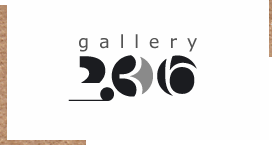8 - 16 december 2007. XX CENTURY ART Fair, Central House of Artists
December 2007 - March 2008. Gallery 2.36
120 graphic works by 51 russian painters of the Twentieth Century
It is like a lightning in the eye’s mind – a zigzag capturing the inexorable in the movement of life. Line is movement, its reflexion, immortalised and yet flickering forever. By incorporating the density of form into its borders, dispensing with everything irrelevant and thus simplifying form, line has a certain characteristic that makes a piece of work ultimately consummate.
Shift, gap and ironic hyperbole make line wise. Line is the tiniest means at the artist’s disposal. That is why it calls for both a ‘cultured’ eye and pictorial will.
Line is the closest and fastest pictorial means in work.
Poetic form is born of long concentration.
By possessing line, the art of the ‘eye’, the art of ‘seeing’ liberates itself from form immediately through it. Its creative process is as short as the lightning itself in the eye’s mind.
The creative mind is in itself creative representation. It is line.
A graphic work is its corpse. These concepts should not be confused. To sum up, line proves that creativity presupposes not merely an arrangement of form but also an immediate representation of life that passed through the eye and the pictorial will of the artist. Thence the true laws of "realism" should come from. Its ultimate and sole formula is realistic to the extent that it is horrifying rather than that it is an 'illusion'.
That is why even 'the most ignorant' of artists love to stick to life and don't like anything of one's own devising. Such attitude is current exclusively among 'Illusionist Realists' (Academicians and Impressionists). Something of one's own devising appears at the very moment of contemplation and work. Shift, gap and exaggeration all make up for that 'culture' or rather that understanding in art, which leads through quests to oneself.
Line is not only form but also colour, hence both light and shade. The same as a verse comprises in its brief form the entire world and even what is bigger than its form and the world itself.
That is why the theory of chiaroscuro based on sphere, prism and cube destroys form and turns it into corpse.
In painting line largely makes for coloristic subtleties, lays bare the border of form and gives it special sensitivity and accomplishment.
Expressive form is when line is invisibly present in a piece of work as
the limit of one form contiguous on another, whose displacement would
have been inconceivable because line has established it.
Boris Grigoriev, essay from book "Rasseya", Peterburg, 1918





